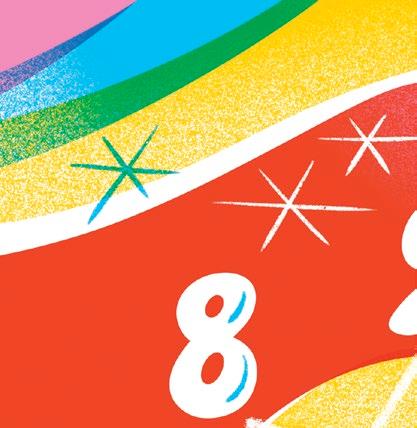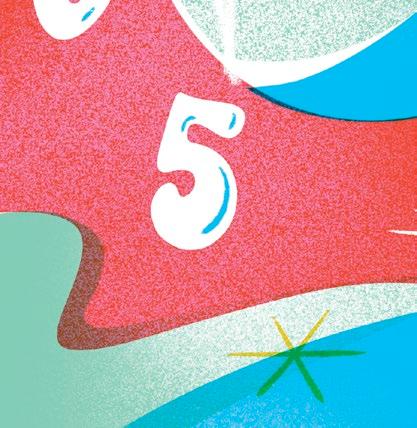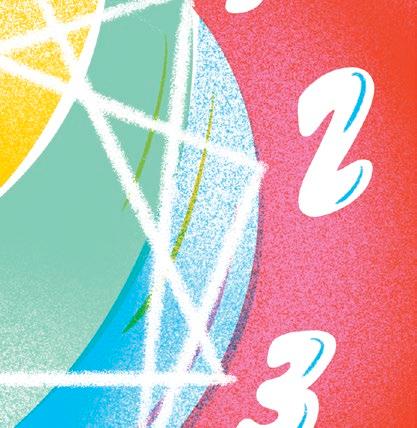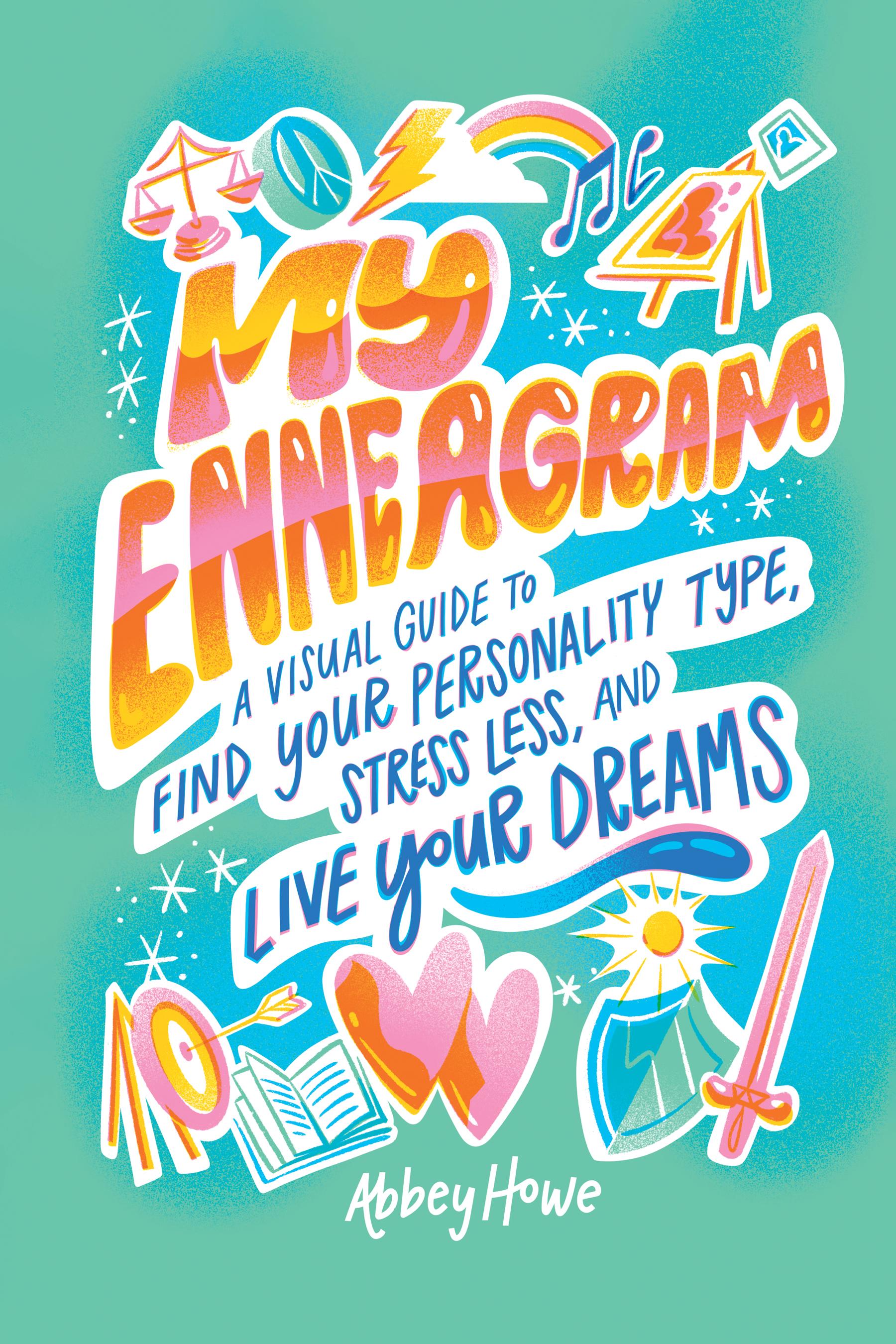







































































































































































































































































































































































































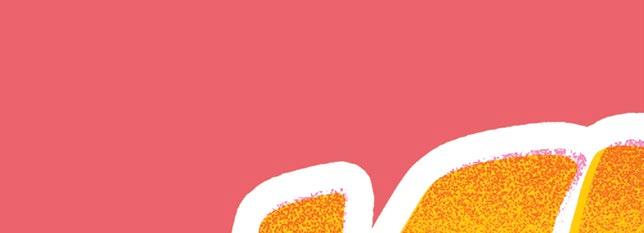

































































































































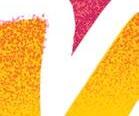





























































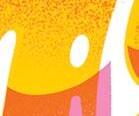



















































































































































































































































































































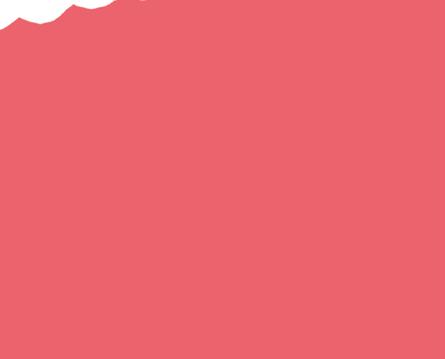






























































































































Copyright © 2026 by Abbey Howe


All rights reserved. No portion of this book may be reproduced or utilized in any form, or by any electronic, mechanical, or other means, without the prior written permission of the publisher.





















Printed in China













SASQUATCH BOOKS with colophon is a registered trademark of Blue Star Press, LLC


The authorized representative in the EU for product safety and compliance is Authorised Rep Compliance Ltd., Ground Floor, 71 Lower Baggot Street, Dublin D02 P593, Ireland. www.arccompliance.com








































Illustrator: Jordan Kay
Editor: Jill Saginario
Production editor: Peggy Gannon











Interior designer: Tony Ong


Author photo by Ashlyn Kudransky








ISBN: 978-1-63217-568-7


Sasquatch Books 1325 Fourth Avenue, Suite 1025 Seattle, WA 98101























SasquatchBooks.com




























































































































































































































































































































































































































































































































































































































































































































It’s the biggest audition of my acting career—a new HBO television series. As I stand in front of ve total strangers, I can’t help but feel that my entire life has led to this moment. No pressure, right?
But it’s not just the desire to land this cool job that’s weighing on me. It’s also that, up to now, I have absolutely nothing to prove to the people who matter most (my parents—that all those years of driving me to voice lessons, seeing every single show (including that awful high school production of King Lear . . . sorry guys), and funding my theater school tuition was worth it. That I was worth it.
After doing a couple of scenes, I launch into the most nervewracking part of the audition: an a cappella rendition of Billy Idol’s “White Wedding.” But as I reach the chorus, something in me cracks. All the years of pressure—to be the best, to prove it was all worth it—suddenly feel impossibly heavy. My throat tightens. My voice catches. And before I can stop it . . .
I burst into tears.
I’m sure the casting people were baf ed. Heck, I was confused too. For so long, my identity had been wrapped up in my ability to perform. If I couldn’t succeed at this, then who was I?
I had never felt like more of a failure than I did as I drove home from the audition, ready to wallow in a bottomless pit of depression in my crappy Los Angeles apartment.
But then, something happened that changed the course of my life: I won an Instagram giveaway. (Yeah, I know. It’s not your typical deus ex machina.)
They sent me a copy of The Road Back to You by Ian Morgan Cron and Suzanne Stabile. It was a book about the Enneagram, some kind of personality test. As a millennial from the BuzzFeed generation, I was immediately on board. I couldn’t wait to read about a fun new way to describe myself—Am I a Joey or a Chandler? (I’m a Monica.); Am I more like Belle or Rapunzel? (De nitely Belle.)
But I was not prepared for what the Enneagram had to teach me. As I read through the book, I freaked out.
“How in the world did someone reach inside my brain and yank out my scariest, most vulnerable thoughts?”
Even more shockingly, there were other people out there just like me!
This personality typing system was like nothing I had ever experienced. Instead of looking at external behaviors, it examined internal motivations:
• Why do you do the things that you do? So I asked myself:
• Why did I let that audition experience crush me so thoroughly?
• Why am I so afraid of disappointing my parents?
• Why am I even trying to be an actor?
The only answer I could come up with was “I don’t want to be a failure.” That’s it. There wasn’t passion or desire. Maybe there had been once. But now there was only fear.
Then I read about my Enneagram type’s core motivations. (For the record, I am a Type Three. More on that type on page 47.) That’s when a lightbulb went on in my head.
I had spent my entire life trying to prove my worth by impressing other people.
I couldn’t voice it before, but now I saw clearly what needed to change: I didn’t want to live in a world where my happiness and identity hinged on how “successful” I looked to others when I couldn’t even de ne success for myself.
I felt like a new chapter had opened up for me. So I devoured that Enneagram book. Then another. And another.
At the time, I had a YouTube channel where I made sketch comedy videos about things I thought were interesting. Naturally, as I became obsessed with the Enneagram, I started making content about it on my channel—acting out the different personality types and how they might respond to different scenarios.
Comments started to ood in:
• “I feel attacked.”
• “I’ve never felt more seen in my life.”
• “This is me!!”
And my favorite comment of all time:
• “Did you become a bug and hide out in my room? How do you know so much about me?”
From the reaction my videos were getting online, I could tell that it wasn’t just me who was impacted by this personality tool. So I decided to get serious and get my certi cation for Enneagram coaching.
And for the rst time, I found my own version of success: a life where I got to help other people understand their personalities while exing my creative muscles through writing, acting, and shooting my own work.
Since then I’ve taught millions of people about the Enneagram—from the college student struggling to nd a friend group (because they prefer to observe rather than participate) to the corporate exec who doesn’t know how to reconcile their blunt leadership style with the softer leadership needs of their team. If you give it a chance, nding your type has the power to break you out of negative patterns and help you grow into your best self. I’ve created this workbook in the hope that you will have the same “aha” moment and transformation I had when I rst held an Enneagram book in my hands.
This is the book I wish I’d had when I was crying in my car outside the audition studio, feeling like my life was over because I didn’t get a role. It’s the book I want to give to my nieces and nephews when they come to me for help. It’s an extension of me, your Enneagram BFF, holding your hand and leading you on a compassionate journey of self-discovery.
Happy discovering, friends. I’m so excited for you!
This book presents a four-step approach to transforming you into your best self, with actionable tips and exercises to guide your way.
STEP ONE helps you nd your Enneagram type with two different quizzes. If you relate to multiple types, don’t worry—that’s totally normal! You will share traits with other Enneagram types, but you can only have one main type.*
STEP ONE AND A HALF After you take the tests, you’ll immediately want to do a deep dive into all nine types so you can unearth your core motivations and discover your main type. This section is like a little informational intermission before you discover what to do with your newfound Enneagram wisdom.
STEP TWO dives into the biggest roadblocks to your growth— stress and burnout—and shows you how to tackle them using your knowledge of your Enneagram type. You’ll learn to spot the warning signs before they take over and walk away with a personalized toolkit of coping strategies and growth tips.
*This is best explained by an experience I had on a scorching day in Bryan, Texas. As I was leading an Enneagram workshop, a woman gasped, “OMG, my husband is definitely a Five!” When I asked why, she said, “He got obsessed with making the perfect steak—his YouTube history was full of Gordon Ramsay videos. Fives love mastering their interests!”
Then a Type One chimed in, “I’ve done that, but only until I learned the right way to cook steak. Then I stopped.”
I geeked out—this was the Enneagram in action! We might all watch steak videos, but our why is different based on our type. For example, a Type Two might want to show her family just how much she loves them by serving a delicious meal, but a Type Four might be motivated by the desire to create something special.
STEP THREE is all about leveling up! You’ll get tips, tools, and exercises to help you grow into your best self, chase your dreams, and crush your goals. We’ll dive into your type’s core struggles and how they might be holding you back—plus, you’ll learn practical ways to overcome them. You’ll also explore your Enneagram wings and how they shape your personality, giving you a deeper understanding of what makes you you!
STEP FOUR is all about the people we love: how to better understand them, support them, and create stronger, more meaningful relationships. Whether you focus on family, friends, or a romantic partner, you’ll learn how to apply your Enneagram knowledge to deepen your connections. If you’ve ever wanted to love and support the other types in your life in a way that truly speaks to them, this step is for you!
When you begin this book, you’ll nd two quizzes that provide number results, which you should simply see as starting points. After that, every exercise, explanation, and insight is designed to help you uncover your true type with con dence. This isn’t just another fast-food Enneagram assessment (you know, a quick and easy-to-consume online test that just assigns you a number and calls it a day). I’ve spent thousands of hours helping people uncover their true types, and I’ve developed my own method to make the process clearer, more reliable, and honestly, way more fun! No test can fully de ne who you are because you are more than just a set of answers. That’s why this workbook looks at the bigger picture, guiding you step by step to narrow down your type while avoiding the common mistakes that make Enneagram typing tricky.
BE SURE TO MAKE IT YOUR OWN: When I was in school, I hated dense, dry textbooks. But give me a creative project to sink my teeth into? I’m all in. I’m talking about making a magni cent hedgehog sculpture out of toothpicks in 5th grade (still proud of that, tbh). So that is my hope for the book you hold in your hands: This is now your fun, creative project. Get out your stickers, Gelly Roll pens, and your favorite cozy beverage. Dog-ear the crap out of it. (If you’re a book purist, please forgive my blasphemy; feel free to use a bookmark.) This is not a place for dust bunnies to collect. And remember—this isn’t a one-and-done kind of thing. Come back to it when you’re feeling stuck, burned out, or wondering if your new crush might be a Type Five.
This isn’t a weapon to use against others to say, “Look! The guide clearly says you’re messed up. Be better!” Instead, use it privately to better understand why people do what they do. Once you understand the why, behaviors make more sense, and you’ll nd it easier to access grace and compassion.
As much of an Enneagram nerd as I am, I’ve gotta be honest: No typology system can fully capture the complexities of your soul or brain. It was created by awed people (aren’t we all?), so it’s not awless. In fact, only the Big Five—which measures openness, conscientiousness, extraversion, agreeableness, and neuroticism— is considered scienti cally rigorous, because personality typing isn’t hard science. That’s why I beg you not to treat the Enneagram as an authoritative doctrine on who you are as a human being. Instead, see it as a tool for self-understanding. If it helps, use it. If it doesn’t—be like NSYNC and say, “Bye bye bye.” To help with this, you’ll nd occasional “Take What Works, Leave What Doesn’t” pages to jot down what resonates . . . and what doesn’t.
The Enneagram isn’t in the business of sticking people into boxes. Like it or not, you’re already in a box. Call it your comfort zone, your patterns of behavior, your survival tactics . . . you’ve been making decisions from that place for a long time. As you move through this guide, I challenge you to ask yourself: “Why am I doing this in the rst place? And how can I break out of the box that I’m already in?”
In its simplest form, the Enneagram is about the way you see the world. It theorizes that you view life through one of nine perspectives and that perspective shapes the things you do. These nine ways of seeing are the Enneagram personality types, which you can visualize through this symbol. The name “Enneagram” comes from the Greek words “ennéa” meaning “nine” and “gramma” meaning “ gure” or “drawing.”
But I want to note: The numbers themselves are arbitrary. No type is better than another because it has a higher or lower number. They could’ve been letters, colors, or cute woodland creatures. (Now I’m really wishing that it was cute woodland creatures so I could be a Type Hedgehog!)
The point is that the symbol gives us a visual for this personality typing system while also telling us how the types relate to each other.
I like to say the Enneagram is like my Great Aunt Hazel. We know she’s old; we’re just not quite sure how old. (I’m pretty sure her 29th birthday is the last time she ever revealed her age.) It’s the same with the Enneagram. Nobody knows the exact date it
rst appeared, but we know a version of it has been around for decades, with some claiming that it can be traced back as far as the fourth century. Which, coincidentally, is when Great Aunt Hazel graduated from college.
The Enneagram as we know it didn’t emerge until the 1950s, when a Bolivian philosopher named Oscar Ichazo shaped those earlier teachings into the typing system we know today. Then his student, Claudio Naranjo, an American-trained psychiatrist, brought the Enneagram to the United States and blended it with modern psychology.
But the Enneagram differs from other personality typing systems in that it can’t point to a single creator or point of origin. Like, Myers–Briggs fans can point to the founders, Katharine Briggs and her daughter, Isabel Myers. Do a quick Google search, and you can discover how the DiSC Assessment was rst developed or who created StrengthsFinder.
The Enneagram, on the other hand, has always been a communal tool. I think this is what makes it so beautiful: Each teacher approaches the system according to their personal lens. They may introduce new elements, discard others, or rede ne existing concepts within the Enneagram framework.
So, like clay, the Enneagram evolves and adapts in the hands of its teachers. And this re ects the diversity of interpretations that enrich our understanding of ourselves and others.
In today’s world, this tool is used by therapists, spiritual leaders, and more recently, large corporations that use it to improve con ict resolution, leadership tactics, and morale.
But perhaps the most valuable thing about it is how it can spark better, more thoughtful conversation by making you aware, possibly for the rst time, of the unique glasses through which you’re seeing the world. And even more importantly, you start to understand the lens through which your best friend is seeing the world! And your mom! And your boss! And your arch nemesis!
That’s ultimately the goal of the Enneagram: It’s a tool for transformation, for understanding yourself, and for better understanding others.
